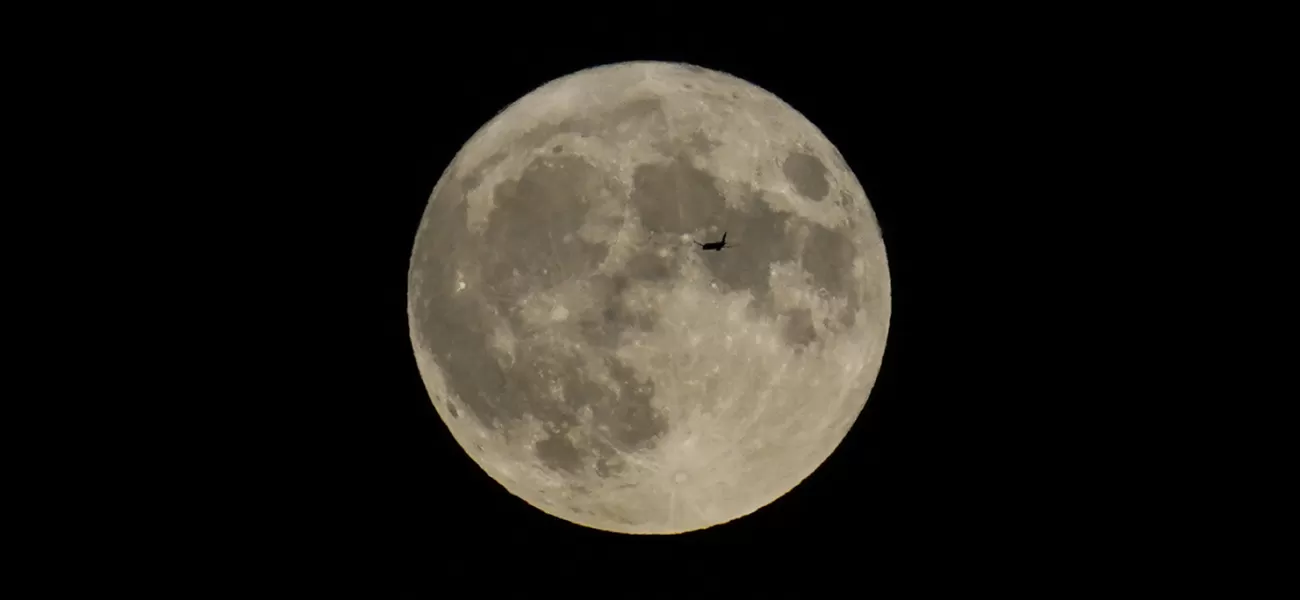Italian scientists have successfully solved a long-standing mystery about the moon that has puzzled researchers for 50 years.
Groundbreaking finding could greatly benefit astronauts during future lunar missions.
July 15th 2024.

Scientists have recently made an exciting discovery on the moon - a cave located near the famous landing site of Apollo 11 astronauts, Neil Armstrong and Buzz Aldrin. This cave, which is accessible from the deepest known pit on the moon, was reported by an Italian-led team on Monday. It is situated in the Sea of Tranquility, only 400 kilometers away from where Apollo 11 touched down.
The pit, along with over 200 others found on the moon, was formed by the collapse of a lava tube. Using radar measurements from NASA's Lunar Reconnaissance Orbiter and comparing them to lava tubes on Earth, researchers were able to confirm the existence of this lunar cave. However, the radar data only reveals the initial part of the underground cavity, and scientists estimate it to be at least 40 meters wide and tens of meters long, if not more.
According to Leonardo Carrer and Lorenzo Bruzzone of the University of Trento, who wrote about their findings in the journal Nature Astronomy, lunar caves have been a mystery for over 50 years. So, it was an exciting moment when they finally proved the existence of one. The majority of these pits seem to be located in the moon's ancient lava plains, but there is also a possibility of them being present at the moon's south pole. This is where NASA plans to land astronauts later this decade, as it is believed that these permanently shadowed craters hold frozen water that could provide essential resources for future missions.
During NASA's Apollo program, 12 astronauts successfully landed on the moon, including Armstrong and Aldrin on July 20, 1969. However, the recent discovery of this cave suggests that there could be hundreds more pits and thousands of lava tubes on the moon. These natural formations could serve as potential shelters for astronauts, protecting them from harmful cosmic rays, solar radiation, and micrometeorite strikes.
The team also believes that the rocks and other materials found inside these caves, which have remained untouched by the harsh surface conditions, can provide valuable insights into the moon's evolution, particularly its volcanic activity. While building habitats from scratch on the moon may be a time-consuming and challenging task, using existing caves could potentially be a more efficient option. The team acknowledges the need to reinforce the cave walls to prevent a collapse, but overall, this discovery opens up new possibilities for future lunar exploration and research.
The pit, along with over 200 others found on the moon, was formed by the collapse of a lava tube. Using radar measurements from NASA's Lunar Reconnaissance Orbiter and comparing them to lava tubes on Earth, researchers were able to confirm the existence of this lunar cave. However, the radar data only reveals the initial part of the underground cavity, and scientists estimate it to be at least 40 meters wide and tens of meters long, if not more.
According to Leonardo Carrer and Lorenzo Bruzzone of the University of Trento, who wrote about their findings in the journal Nature Astronomy, lunar caves have been a mystery for over 50 years. So, it was an exciting moment when they finally proved the existence of one. The majority of these pits seem to be located in the moon's ancient lava plains, but there is also a possibility of them being present at the moon's south pole. This is where NASA plans to land astronauts later this decade, as it is believed that these permanently shadowed craters hold frozen water that could provide essential resources for future missions.
During NASA's Apollo program, 12 astronauts successfully landed on the moon, including Armstrong and Aldrin on July 20, 1969. However, the recent discovery of this cave suggests that there could be hundreds more pits and thousands of lava tubes on the moon. These natural formations could serve as potential shelters for astronauts, protecting them from harmful cosmic rays, solar radiation, and micrometeorite strikes.
The team also believes that the rocks and other materials found inside these caves, which have remained untouched by the harsh surface conditions, can provide valuable insights into the moon's evolution, particularly its volcanic activity. While building habitats from scratch on the moon may be a time-consuming and challenging task, using existing caves could potentially be a more efficient option. The team acknowledges the need to reinforce the cave walls to prevent a collapse, but overall, this discovery opens up new possibilities for future lunar exploration and research.
[This article has been trending online recently and has been generated with AI. Your feed is customized.]
[Generative AI is experimental.]
0
0
Submit Comment





